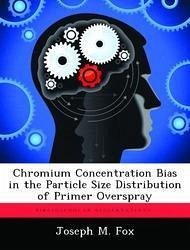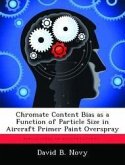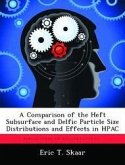Air Force aircraft-painting operations create clouds of paint overspray that contain strontium chromate, a confirmed carcinogen, which poses an exposure hazard to painters. It is often assumed that all particles in paint overspray have the same chemical composition as the original paint mixture, however differences in composition may occur in various particle sizes. Because particle size affects where in the respiratory system a particle deposits, actual exposures to a specific chemical may vary. Paint particles greater than 2.5 um are deposited in the upper respiratory system and will be eliminated by physiological removal mechanisms. Particles less than 2.5 um will deposit in the pulmonary region of the lungs where removal processes are slower. Currently it is assumed for the purposes of industrial hygiene evaluations that there is an equal distribution of chromate across all paint particle sizes. Particle size distributions were collected on digestible cellulose substrates during painting operations using two 7-stage cascade impactors. Each substrate was weighed before and after collection to determine total mass collected at each particle size and then samples were digested and analyzed for chromium mass by atomic absorption spectrometry. In particles smaller than 2.5 um, chromium concentrations per total mass collected averaged 21 ug of chromium/mg of total mass collected. Particles larger than 2.5 um averaged 75 ug/mg. A Wilcox in ranked sum test was used to evaluate the two data groups and found a statistically significant difference between the two particle size groups, indicating that less chromium is found in particles most likely to deposit reach the pulmonary region of the lungs.
Hinweis: Dieser Artikel kann nur an eine deutsche Lieferadresse ausgeliefert werden.
Hinweis: Dieser Artikel kann nur an eine deutsche Lieferadresse ausgeliefert werden.








